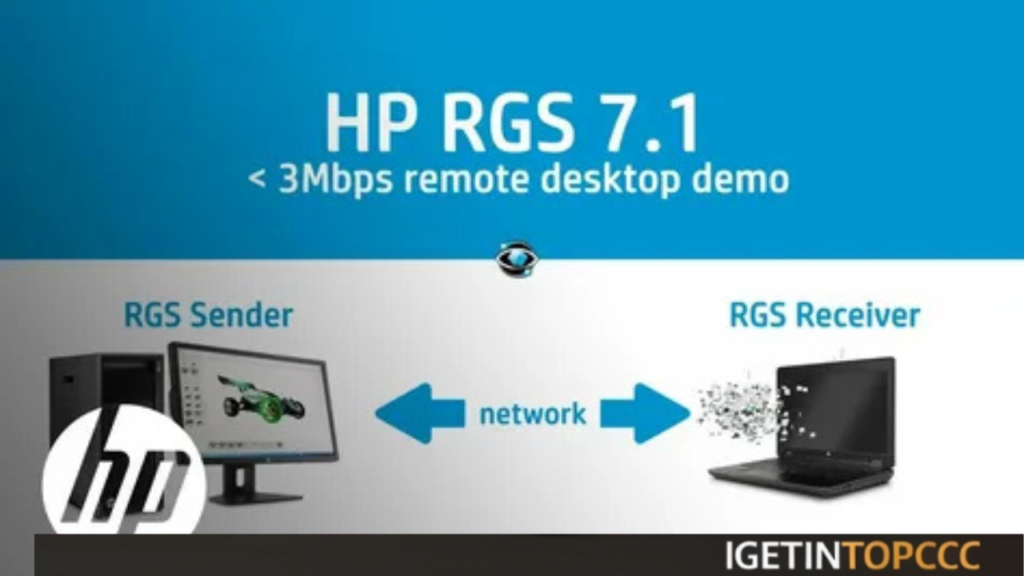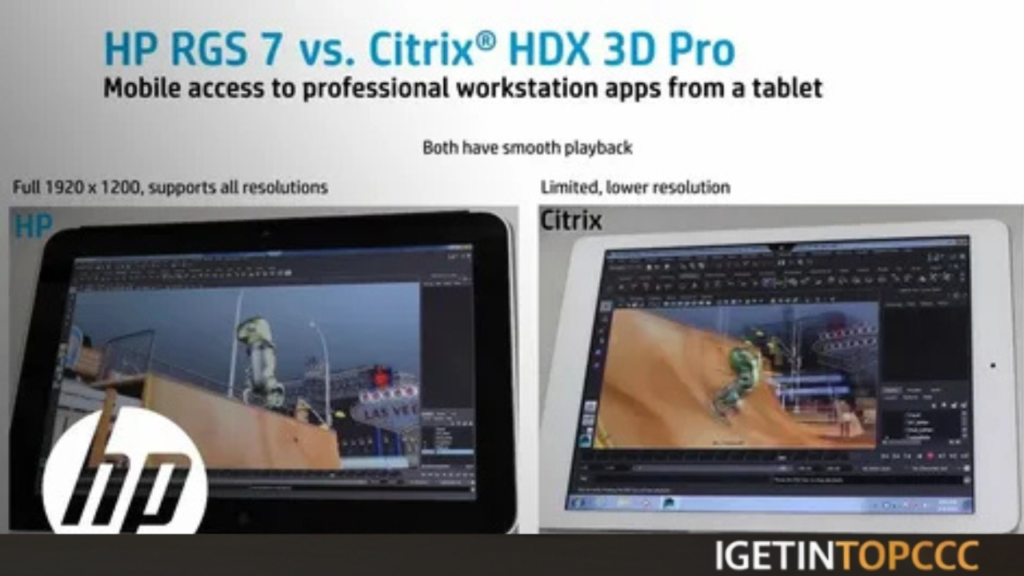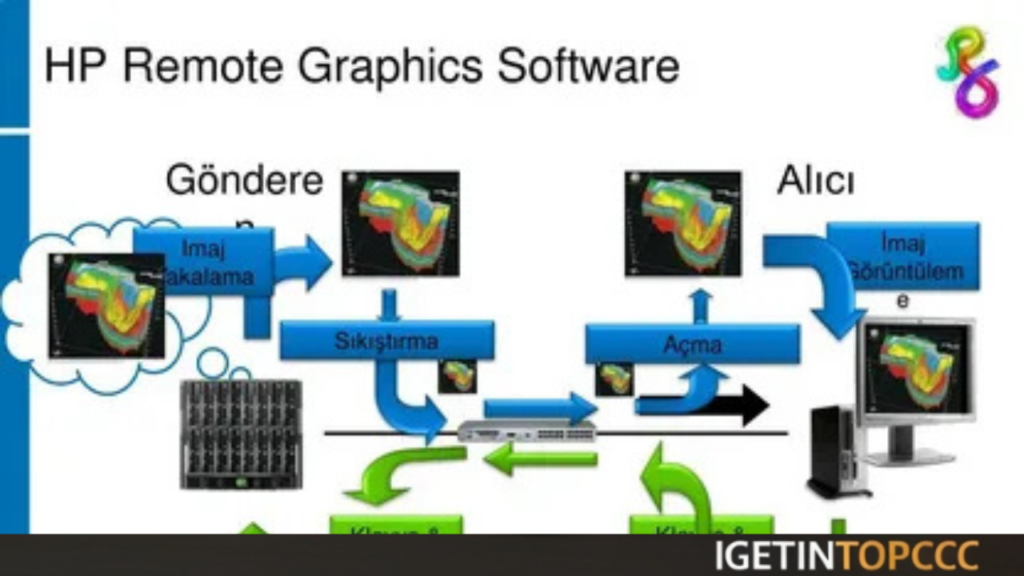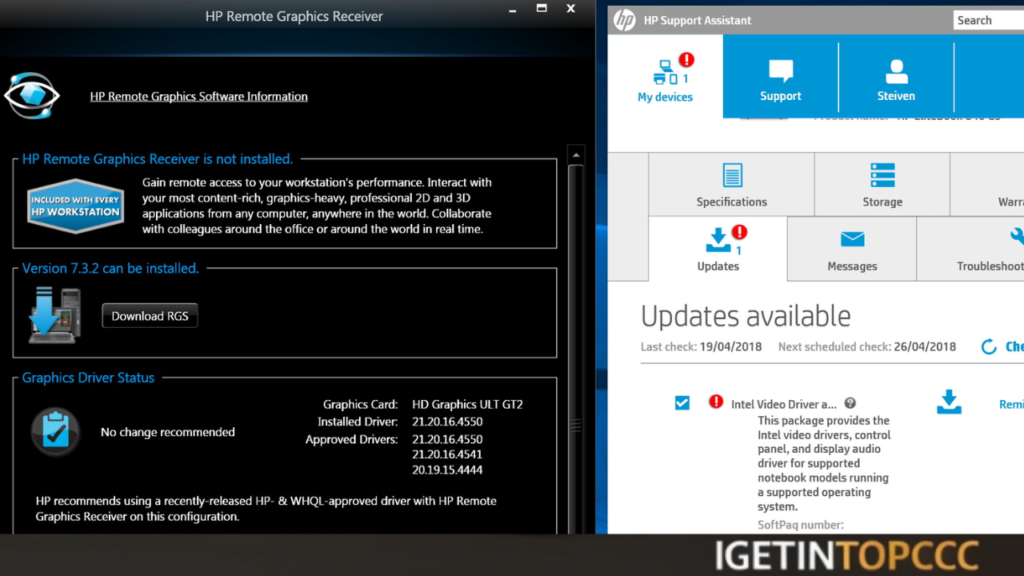Hp remote graphics software download
Today, most professionals, especially in the engineering, architecture, and graphic design fields, require remote access to high-performance computing resources. HP Remote Graphics Software is a robust tool designed to facilitate remote access to HP workstations and servers, allowing users to collaborate effectively and access demanding applications from virtually anywhere.

What is HP Remote Graphics Software?
HP Remote Graphics Software is a proprietary remote desktop application developed by Hewlett-Packard (HP). It lets users remotely connect to HP workstations and servers, delivering high-quality graphics and responsive performance for resource-intensive applications. RGS is particularly beneficial for professionals who require access to high-end graphical applications but may not be physically present at their workstations.
Key Features
RGS is optimized to provide high-quality graphics over the internet. It supports both 2D and 3D applications, thus becoming apt for industries heavily using graphics content.
Multi-platform compatibility: This software supports various operating systems like Windows, macOS, and Linux, thus the users can connect from various devices.
Collaboration Tools: RGS has collaboration features that help team members work together. Users can share their screens so that others can see the work they are doing in real-time, which is an important feature for team projects.
Secure Connections: HP RGS uses strong security protocols to ensure that the remote sessions are secure. Encryption and authentication mechanisms are also used to protect sensitive data.
Adaptive Performance: The software adapts its performance according to the bandwidth available. This way, users can have a seamless experience even when using slower connections.
Customizable Settings: Users can make different settings for optimal performance according to their requirements. For example, users can adjust the resolution and color depth.
Installation and Setup
System Requirements
Before setting up HP RGS, it is crucial that the host and client systems comply with the system requirements. Generally, these include:
HP-supported host workstation or server.
Compatible OS both at host and client side
Ample RAM and processing capabilities for applications
Installation
Download Software
Open the official HP website and download the latest version of RGS.
Installation on Host
Install the software on the HP workstation or server that is going to be the host. Run the installer and complete all installation prompts.
Install on Client: On the other device from which you will access, install the RGS client.
Configure: After installing the software, configure your needs on how to use the settings; this involves the user account and security settings.
Use Cases
Graphic Design and Animation
Graphic designers and animators can significantly benefit from HP RGS. They can run high-performance applications like Adobe Creative Suite or Autodesk Maya remotely, which would allow them to work in different locations without sacrificing performance.
Engineering Applications
Engineering professionals typically use software applications that demand a lot of processing power, such as CAD applications. RGS would allow engineers to work on complex designs and simulations, collaborating seamlessly with team members.

Scientific Research
Research institutions that utilize data-intensive applications can leverage HP RGS for remote access to powerful computing resources. Researchers can analyze large datasets or run simulations from anywhere, enhancing productivity and collaboration.
Performance Considerations
While HP RGS is designed to deliver high performance, several factors can affect the user experience:
Network Quality: A stable fast internet connection is essential. Users should perform speed tests to ensure they can handle remote graphics.
Host Configuration: The specifications of the host workstation play an important role in performance. A machine with higher capabilities in terms of RAM, CPU, and GPU yields better results.
Client Device Capability: The client device needs to be capable of handling the graphical output, especially for demanding applications, in order to access the remote session.

Features Hp remote graphics software
- High-Quality Graphics: Supports 2D and 3D graphics for demanding applications.
- Multi-Platform Compatibility: Works on Windows, macOS, and Linux systems.
- Secure Connections: Utilizes encryption and authentication for secure remote sessions.
- Collaboration Tools: Enables screen sharing and real-time collaboration.
- Adaptive Performance: Optimizes performance based on available bandwidth.
- Customizable Settings: Allows users to adjust resolution and color depth.
- User-Friendly Interface: Simplified navigation for seamless user experience.
- Remote Printing: Print documents remotely from the host workstation.
- Session Recording: Record sessions for later review or training purposes.
- Multi-Monitor Support: Use multiple displays for enhanced productivity.
- Cross-Device Functionality: Access from tablets and mobile devices.

Technical Specifications Hp remote graphics software
- Version: Latest available version
- Interface Language: English and multiple other languages
- Designed by: Hewlett-Packard (HP)
- Type of Software: Remote desktop application
- Audio Language: English
- Uploader / Repack Group: Official HP
- File Name: HP_RGS_Installer.exe
- Download Size: Approximately 200 MB
System Requirements for Hp remote graphics software
For PC
- Operating System: Windows 10 or later
- Processor: Dual-core processor, 2.0 GHz or higher
- RAM: Minimum 8 GB (16 GB recommended)
- Graphics: DirectX 11 compatible graphics card
- Network: Minimum 1 Mbps internet connection
For MacBook
- Operating System: macOS Mojave (10.14) or later
- Processor: Intel Core i5 or better
- RAM: Minimum 8 GB (16 GB recommended)
- Graphics: Metal-compatible graphics card
- Network: Minimum 1 Mbps internet connection

Leave a Reply